A quick history of flight control systems:
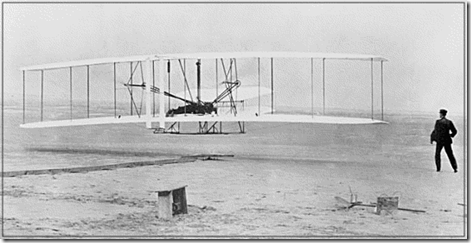
December 17 1903, the Wright brothers make the first powered, sustained flight at Kitty Hawk, North Carolina. Cables and pulleys were the flight control system of the day.
A system of pulleys and cables enabled the Wright Brothers were the first to take to the air in controllable flight on 17 December 1903. Aircraft of World War 1 methods to control aircraft remained basically the same cable and pulley system. Pilot control inputs through stick and rudder pedals were transmitted to the control surfaces via pulleys and cables.
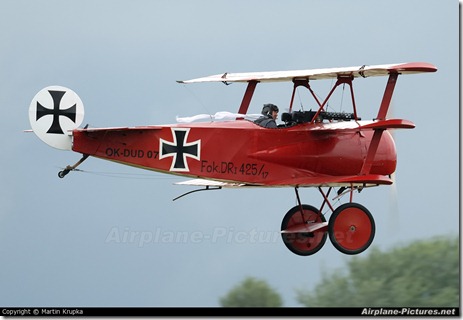
Fokker DR1. Representative for a typical World War 1 aircraft.
By the time World War 2 started aircraft were more complex, faster and far more capable. Most flight control systems at the time remained cables and pulleys but the problem of stability remained. There needed to be a method for reducing the constant need for pilot control input especially during long flights.
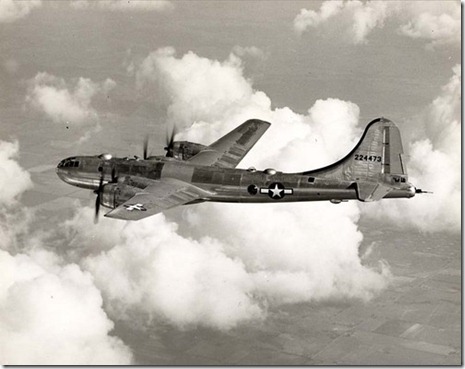
Boeing?s B-29 Superfortress. Typical configuration for a World War 2 aircraft.
By the late 1940s a very primitive ?assisted flight control system? had flown from Newfoundland to England aboard a C-54 entirely under the control of a flight program punched out on cards.
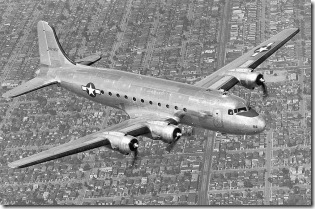
Douglas C-54 Skymaster
Wartime technological leaps enabled postwar aircraft designs not only increase in speed but also increase in size. At 1000 knots there simply isn?t enough time for a human being to react. The larger size of aircraft also meant there was a great deal more inertia for a human to struggle to control. Due to the increase in aircraft size, inertia and dynamic pressure, without some from of mechanical assistance flying would become too difficult for pilots to handle because of the force amount of force required to move to control surface. The solution was to connect the pilot?s stick and rudder pedals to hydraulics which were, in turn, connected to surfaces with which to control the aircraft.
Development of hydraulic flight control systems meant there was no direct connection between the stick/rudder pedals and the control surface. Pilots develop a sense of what an aircraft is doing, not only from visual cues, but also from seat of the pants flying to understand orientation of the airplane.? Hydraulic systems brought about the need for ?artificial feel systems? that replicated force feedback to the pilot through the stick and from the control surface.
Hydraulic flight controls are heavier than pulleys and cables, adding weight to the aircraft. That translates into less weight overall an aircraft can use for a given task. Less weight devoted to fuel for range in a fighter, less weight devoted to cargo or passengers in the airlines. In spaceflight weight is also a critical issue. The more a spacecraft weighs, the more thrust is required to bring that space to orbit. Controlling a spacecraft with hydraulics to going to be too heavy.
NASA used a simple binary logic flight control program in the Mercury program. The logical design consisted of a control signal that transmitted ?on/off? commands for firing of the maneuvering rockets. The attitude of the spacecraft could be changed by the pilot?s moving a hand controller with the direction of the controller?s movement indicating pitch, roll or yaw to the control system. The control system then sent appropriate signals to fire the correct sets of rockets to achieve the desired effect. The Mercury flight control system was only capable of attitude control.
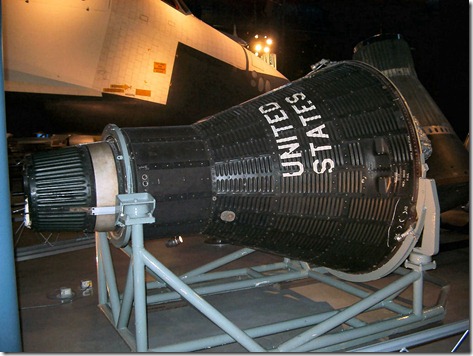
The Mercury capsule as displayed at the Udvar-Hazy Center of the National Air and Space Museum.
By 1968 all the NASA was focused on putting a human on the moon. Grumman, designer of the Lunar Module, was tasked with NASA and MIT to develop a flight control system capable of landing on the moon. The flight control system for the Lunar Module was called PGNCS ?(Primary Guidance, Navigation and Control System?pronounced ?pings?). Considerable experience in developing PGNCS was gained by engineers that worked on the Polaris SLBM and Atlas ICBM programs.
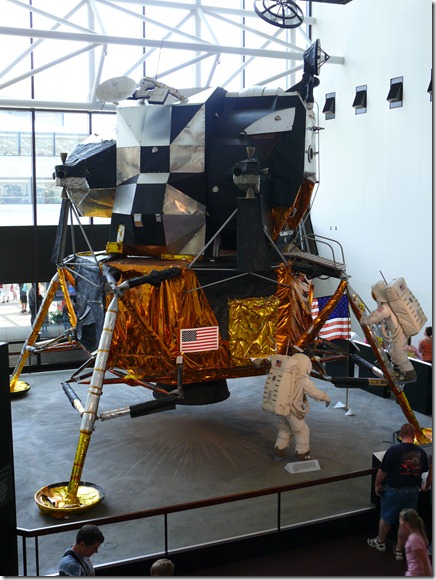
The Grumman Lunar Module on display at the National Air and Space Museum.
PGNCS had all the elements that were going to be needed to develop a flight control system. The most important element was the inertial measurement unit. The Lunar Module used 3 IMUs (inertial measurement units), 1 each for each axis of flight (pitch, roll and yaw). The IMU generated analog signals that had to be read by one of the first digital computers.
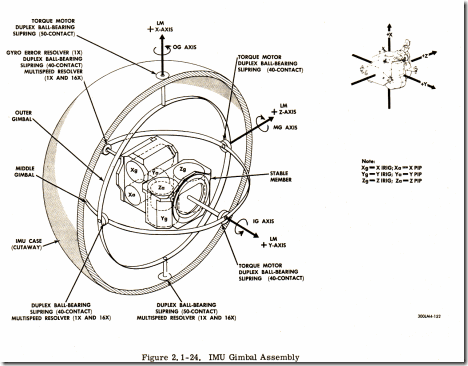
Schematic cutaway of the IMU in the Lunar Module.
This video details the development of the IMU and integration with the Lunar Module?s flight control system (it?s a fascinating 3-part series).
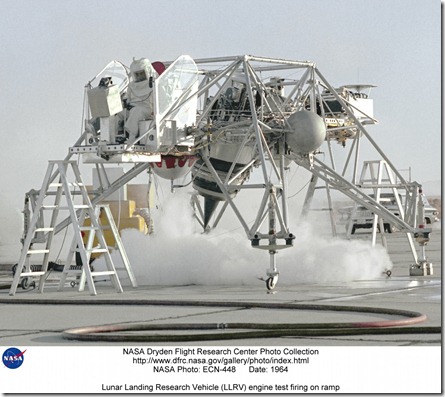
The LLRV
The LLRV?(Lunar Landing Research Vehicle)?was developed to test flight control laws (programming code) for the Lunar Module here on Earth. The LLRV used reaction control jets because the Moon has 1\6th of the Earth?s gravity. The LLRV was not an aerodynamic vehicle as it used solely engine thrust to get airborne.? Once flight control laws were developed, testing of the LLRV wound down but a group led by NASA thought that software developed and tested on the LLRV and the Apollo Lunar Lander might be beneficial to aircraft control. After LLRV, computers, sensors and actuators became advanced enough to start flight-testing.
Computers in flight control systems come into 2 distinct types. Analog and digital. Mechanical analog computers operate by creating a mechanical analogy between the position of numbers on various scales and the products, quotients, squares, cube roots, etc that it?s used to calculate. In terms of flight control computers, control laws are hard-wired via the circuitry in the computer. While analog computer is resistant to power surges and viruses it?s very difficult to re-program. That requires a physical reconfiguration of the embedded circuits. Analog computers also run at higher temperatures because data is in the form of amplitudes and temperature effects modulate the amplitude.
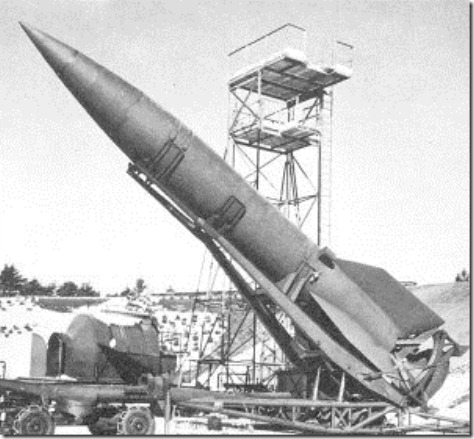
The first vehicular use of an analog computer was with the German A-4 [V-2] rocket of World War 2 fame. The A-4 used an electronic analog computer that modeled the differential equations of the control laws and accepted voltage values and input and generated voltage as output to an amplifier. The amplifier then sent those commands to the control surface actuators. This technology formed the basis for digital computers almost 40 years later.
Digital computers on the other hand read data in binary, ?1?s and ?0?s. Data needs to be converted to binary string of bits before it can be used by the computer. The problem is these bit streams, coming from multiple sources, can be too dense and rapid for proper computer processing into readable data sets. After 1963 improvements in transistors and work on ?sampling theory? made the use of digital computers more widespread not only in aviation but a whole range of applications.
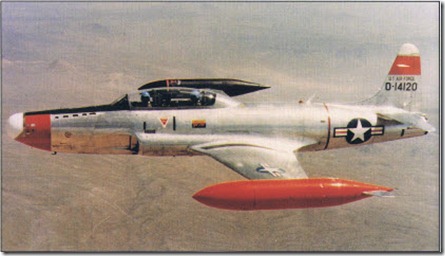
NT-33 In-Flight Simulator
In 1954, the NT-33 In-flight Simulator was developed to test other equipment that would be needed in a digital flight control system. The NT-33 tested improvements in gyroscopes, actuators, effectors, stability augmentation and pitot-static systems. Also in 1957 the USAF flew a modified B-47 (53-2280) with fly-by-wire channel in the pitch axis.
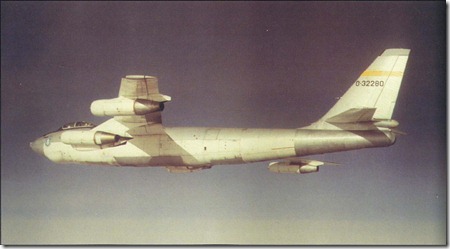
JB-74E 53-2280 Fly By Wire test-bed aircraft.
By early 1971 the NASA Office of Advanced Research and Technology wanted to see more technology transferred from the Apollo program. Luckily for them the flight control computer was, up that time, one of the most reliable computers ever built. Soon the office approved for a feasibility study to install Apollo flight control system hardware into an F-8 Crusader.
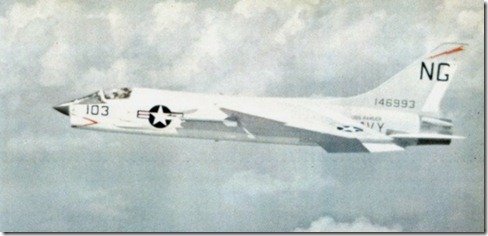
A stock Vought F-8C Crusader BuNo 146993 from VF-191 ?Red Lightnings.?
The F-8 Crusader is a single seat, single engine, carrier borne fighter from the 1950s. The ?sader, as it?s properly known, gained a fearsome reputation as a MiG killer in the skies over North Vietnam however by the 1970s the ?sader was being phased out in-favor of the newer F-4 Phantom II. NASA chose the ?sader because it was readily available and cost effective. The intention was to modify the ?sader by removing the horizontal stabilizers and placing them in front of the wings (as canards). The F-8s centerline air inlet? would have been unaffected by this modification. However this was considered too costly to be included in the program.
By 1970 NASA acquired 4 F-8Cs on their way to the boneyard and sent them to the Dryden Flight Research Center. Money for NASA?s Digital Fly By Wire was appropriated $1 million dollars for the first year. Over time the entire cost of the program, which ran just over 10 years, would run $12 million dollars. The program itself would be conducted in 3 phases starting in early 1971. Phase I, scheduled to start in 1971, would have 2 goals: ensuring the technology worked and developing the tools to move forward. Phase IB would introduce a second computer in the flight control system and begin to test and develop system redundancy. Phase II, scheduled to run Q2 of 1974, was to concentrate on gaining knowledge and developing techniques for increasing computer reliability. Over time the schedule wasn?t met but the objective for each phase never changed. Over the next year Flight Research Center hardware and software engineers began modification work on the F-8 aircraft.
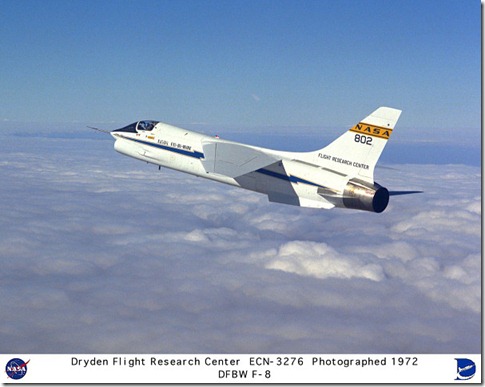
Vought F-8C NASA 802 Digital Fly By Wire Test-bed aircraft.
The next segments will cover modification of the F-8 aircraft, phases of the flight test program and benefits to future aircraft programs.
Like this:
Loading...
Source: http://thelexicans.wordpress.com/2013/06/01/nasas-f-8-digital-fly-by-wire-program-part-1/
Olga Korbut Usain Bolt 2012 Olympics Katie Ledecky Aaron Ross Sikh temple Nastia Liukin Gabby Douglas hair
কোন মন্তব্য নেই:
একটি মন্তব্য পোস্ট করুন